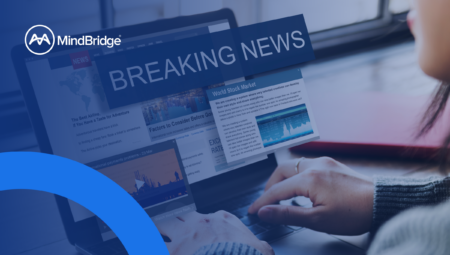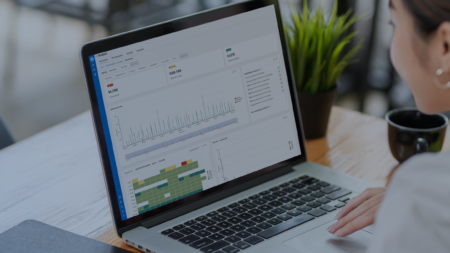Internal Controls Over Financial Reporting (ICFR) refers to the framework of controls, policies, and procedures that ensure the accuracy, reliability, and integrity of a company’s financial statements. These controls are designed to safeguard against material misstatements—whether from fraud, error, or process failure.
At its core, ICFR ensures that financial statements are prepared in accordance with standards like US GAAP and IFRS, that transactions are accurately recorded and properly authorized, and that assets are protected from misuse. It’s not just about satisfying auditors—strong internal controls are foundational to financial integrity and enterprise trust.
Historically, ICFR was implemented primarily to meet regulatory requirements such as Sarbanes-Oxley (SOX), often through annual testing, sample-based reviews, and documentation-heavy audit prep. But that paradigm is shifting. Forward-looking organizations are now evolving ICFR into a strategic capability—one that strengthens operational confidence and leverages technologies like artificial intelligence to move beyond static checklists toward continuous oversight and insight.
Why Internal Controls Still Matter—More Than Ever
Modern enterprises face a level of complexity that legacy control systems were never built to manage. The volume of financial data has skyrocketed. ERP environments have grown more fragmented and hybridized. Regulatory scrutiny continues to intensify, particularly in areas like ESG, cyber controls, and real-time reporting expectations.
At the same time, the risk landscape has become more volatile. From sophisticated fraud schemes to control fatigue and human error, internal threats are more difficult to detect using traditional methods. According to Gartner, nearly 59% of controllership professionals admit to multiple financial reporting errors per month, and one-third report errors on a weekly basis.
Against this backdrop, internal controls remain an essential line of defense—but the methods used to implement and monitor them must evolve to meet today’s expectations.
COSO: A Framework to Build On, Not Stop At
The COSO Internal Control–Integrated Framework continues to serve as the industry standard for structuring ICFR. Its five components—control environment, risk assessment, control activities, information and communication, and monitoring—form a comprehensive model for building strong financial oversight.
Yet while COSO provides the proper foundation, it was developed in an era where periodic, manual, and sample-based control testing was the norm. That’s no longer sufficient.
Entity-level controls and COSO-aligned principles are still essential, but without intelligent automation and continuous visibility, even well-designed control environments are at risk of breakdown. The gap between control design and actual control effectiveness is widening, particularly in global, data-rich enterprises.
What’s Holding Traditional ICFR Back?
Legacy ICFR models rely heavily on reactive processes. Control gaps are often discovered weeks or months after they’ve occurred—typically during audits or quarterly close. Sample-based testing, while applicable for cost containment, leaves entire datasets unreviewed. Manual testing introduces error, consumes time, and drains high-value resources from more strategic work.
Control owners often lack end-to-end visibility and cannot explain why certain anomalies were—or weren’t—flagged. This creates a widening disconnect between the control environment’s intent and the assurance it actually provides.
These limitations don’t just introduce financial exposure. They erode confidence across executive leadership, audit committees, investors, and regulators.
How AI Strengthens Each COSO Component
The COSO Internal Control–Integrated Framework remains the most widely used structure for ICFR—and for good reason. But each of its five components can be significantly enhanced through AI and automation. Here’s how AiCFR elevates COSO from foundational to future-ready:
Control Environment: Setting a Culture of Accountability
The control environment sets the tone for how seriously financial integrity is taken within an organization. AI-powered tools strengthen governance by providing transparent risk insights, enforcing policy compliance through automation, and making every transaction traceable.
Risk Assessment: Seeing What Spreadsheets Can’t
Traditional risk assessments rely on static inputs and periodic updates. AI allows for dynamic, full-population risk scoring—identifying high-risk divisions, accounts, or entities in real time, rather than retroactively.
Control Activities: From Manual to Scalable
Policies and procedures are more powerful when they’re scalable. AI automates testing across 100% of transactions, adapts to new patterns, and validates control performance continuously—not just during audit prep.
Information & Communication: Breaking Down Silos
High-functioning ICFR depends on timely access to high-quality information. AI-driven anomaly detection platforms integrate with ERP and GRC systems via APIs, providing standardized reporting and real-time dashboards that enhance collaboration across functions.
Monitoring Activities: From Quarterly to Continuous
Monitoring is no longer a periodic exercise. With AI, risk segmentation and analytic annotations allow organizations to continuously evaluate control performance, document review evidence, and proactively address deficiencies.
The Shift Toward Continuous, AI-Powered Control
A growing number of organizations are embracing a shift from traditional ICFR to a model of AI-powered continuous control monitoring, also referred to as AiCFR.
AiCFR does not replace COSO. It strengthens and modernizes it by enabling continuous evaluation of every transaction across the general ledger, subledgers, and key financial processes. Rather than rely on pre-defined rules or sample-based audit plans, AiCFR solutions like MindBridge use a layered approach that includes statistical modeling, machine learning, and rule-based tests to detect risk, outliers, and control failures.
This allows finance teams to continuously assess key and non-key controls, scoring transactions based on relative risk and enabling proactive intervention before minor issues become major deficiencies.
From Framework to Execution: A Practical Path Toward AiCFR
Knowing the framework is one thing—operationalizing it is another. For finance teams ready to modernize their ICFR approach, here’s a practical sequence to get started:
- Prioritize Risks with AI-Driven Heatmaps
Identify the highest-risk areas across entities and allocate resources accordingly. Let the data drive your focus.
- Document and Own Key Controls
Clarify process narratives, assign owners, and define what each control is designed to accomplish. Visibility is non-negotiable.
- Stress-Test with Scenario Analysis
Evaluate how controls respond to anomalies or rare edge cases—before those scenarios play out in the real world.
- Remediate and Automate
Fix root causes, not symptoms. Use AI to reduce manual intervention and boost consistency.
- Report Clearly, Continuously
Embed audit-ready evidence directly into dashboards. Track trends, remediation progress, and emerging risks in real time.
What Modern ICFR Looks Like in Practice
A modern ICFR environment built on AiCFR principles transforms internal controls from a reporting obligation into a strategic capability. Organizations that implement this model gain full-population risk coverage across every transaction—not just a statistical sample. They shift resources from manual testing to strategic oversight, reducing fatigue and freeing up high-value talent to focus on process improvement and financial insight.
With embedded explainability and integrated dashboards, control owners and audit leads can demonstrate control effectiveness in real time, align more easily with external auditors, and reduce audit cycle timelines and cost.
A Real-World Example of AiCFR in Action:
Polaris and the Shift to Insight-Driven Controls
After years of ERP fragmentation, Polaris—a global powersports manufacturer—faced rising audit costs and lacked a unified view of financial risk. Traditional sampling methods couldn’t keep up with the volume or complexity of their operations, leaving blind spots in their internal controls.
To modernize its ICFR environment, Polaris embedded MindBridge across its finance and audit functions. The impact was transformative:
- 100% of general ledger transactions are now analyzed using MindBridge’s AI-powered risk scoring engine.
- Threshold-based reviews were replaced with dynamic, risk-profile thresholds tailored to Polaris’s unique transaction patterns.
- Monitoring activities became adaptive, continuously evolving alongside changes in the business environment.
- Anomalies across vendor, payroll, and subledger data are surfaced automatically, without waiting for periodic reviews.
The results were immediate and measurable. Time previously spent chasing low-risk entries was redirected to higher-value analysis. Audit scopes became more precise, grounded in real transaction risk rather than static sampling. Resources were better allocated across divisions, and confidence in the system—and the data itself—improved significantly.
“It’s like starting on Chapter 10 instead of building everything yourself.”
— Leader of Internal Audit Data Solutions at Polaris
MindBridge AiCFR: AI-Driven Internal Controls That Scale
MindBridge is a purpose-built platform designed to deliver AI-powered financial control across the full COSO framework. It analyzes 100% of transactions using a blend of unsupervised machine learning, statistical testing, and expert-defined control logic. The result is intelligent anomaly detection that provides explainability, audit-ready documentation, and continuous control evidence embedded directly into financial workflows.
MindBridge supports:
- Control mapping across COSO principles
- Risk scoring at the transaction level
- Control activity validation (including stress testing and scenario analysis)
- Automated evidence collection and stakeholder reporting
Importantly, MindBridge integrates with ERP systems and workflows without requiring extensive IT lift or re-architecture.
ICFR as a Strategic Advantage
The organizations that lead in financial control no longer view ICFR as a regulatory hurdle. They see it as a strategic asset—a means to increase agility, reduce risk, and drive operational excellence. Continuous monitoring isn’t just about faster audits. It’s about aligning teams around risk-informed decision-making and building trust across the enterprise.
For CFOs, controllers, and transformation leaders, AiCFR offers a path to a more resilient and scalable control environment—one that evolves alongside your business, rather than reacting to it.
If you’re exploring how to modernize internal controls without overhauling your systems or staff, our team is here to help. Contact us to learn how MindBridge helps finance leaders turn ICFR into a true source of strategic advantage.
Resources to Explore Next
- 📘 Download the AiCFR™ Whitepaper – Deep dive into control modernization with anomaly detection
- 📺 Watch the AiCFR™ Webinar – Real-world use cases from finance and audit leaders
- 📊 Explore Data Analytics in Internal Audit – How AI transforms internal audit and controls
- 🏢 See How Polaris Embedded AI in Internal Controls – Full case study



